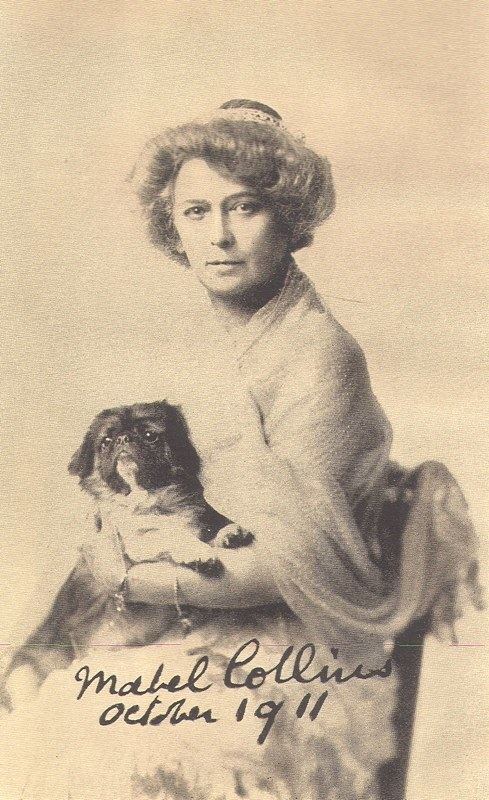Mabel Collins was born in 1851 to Edward James Mortimer Collins, a poet and journalist, and Susanna Hubbard, a merchant’s daughter. The family lived in Guernsey, England where they had many financial issues and lived a chaotic lifestyle. Mabel was taught at home by her father, and by the time she was twelve, began to write romances. Her mom died in 1867 and her dad remarried Francis Cotton, to whom he turned his full attention, ignoring his children.
In 1871, Mabel married Keningale Robert Cook. He was six years older than her and well educated, receiving several degrees, including a Doctorate in Law in 1875. Cook became a stockbroker in London and published poetry and articles in the magazine, Woman. Mabel soon published there as well. By 1875 her first novel, The Blacksmith and Scholar was in print.
Mabel was a medium in the 1870s. Florence Marryat was so impressed with a communication from her daughter via Mabel that she gave an account in “There is no Death” (1891). In 1878, Mabel began to have Egyptian related communications. Some of this material became “Idyll of the White Lotus” and appeared in the Banner of Light.
Mabel was first introduced to theosophy in 1881 when a neighbor loaned her Isis Unveiled by H.P. Blavatsky. When Blavatsky came to London in 1884, Mabel met with her on two or three occasions. Mabel wrote her book, Light on the Path, during that year. She described leaving her body and arriving in a hall where the wall was covered in jewels. She found that there were words that she memorized and later wrote down when she returned to her body.
Mabel was not happy with married life and complained of being bored. She and Keningale separated in 1885, and when he died in 1886, he left Mabel enough money to live comfortably for a while. After Blavatsky returned to England, she shared a home with Mabel. They created the monthly journal, Lucifer, in 1887, but Blavatsky did not contribute toward her share of the expenses and appeared to be jealous of Mabel gaining attention. Blavatsky eventually moved out.
Mabel continued with her writing, publishing a weekly column, and writing books. Blavatsky worked against her at every turn, trying to force Mabel into crediting Blavatsky’s spiritual guides with the content of Light on the Path, and accusing Mabel of practicing the dark arts. Mabel finally lodged a complaint for libel in July 1889.
Because of the stress, Mabel developed eczema and suffered from incessant headaches. She had a nervous breakdown and spent four months being cared for by her sister. Mabel’s problems with Blavatsky did not stop until 1891, when Blavatsky died.
Mabel spent much of her time writing but was not making enough money and was forced to declare bankruptcy in 1892. By 1912, she finally began to write regularly for the Occult Review. In 1913, her bank folded, taking her savings with it. She ended up begging for money from various sources. Her letters continued in the Occult Review throughout that year.
The First World War threw Mabel in a deep depression. To aide in the war effort, she visited soldiers and wrote her book, The Crucible. In 1915 she went to stay with Catherine Metcalfe and wrote Our Glorious Future at Metcalfe’s home. They were to spend the last twelve years of Mabel’s life together. Mabel died of angina in 1927 at the age of seventy-six.
Additional Reading:
Collins, Mabel (1885) Light on the Path. Reprinted Quest Books, 1970
Collins, Mabel. Mabel Collins Collection- Seven Books. The Esoteric Collection, 2019
Farnell, Kim. Mystical Vampire: The Life and Works of Mabel Collins. Mandrake, Oxford. https://www.kimfarnell.co.uk/mabel1.htm


lovely reading – thank you
Such a sad life despite her work for Spirit. Thank you for a wonderful article.